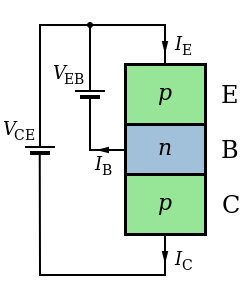In this lab a temperature measurement system will construct. A thermistor is a variable resistor
which resistance changes with temperature.
 |
| Figure 1: Calculations for a Thermistor |
The resistance versus temperature curve
of a thermistor is not linear curve, but it is
linear between 25 - 37 centigrade degrees.
In the circuit a NTC (Negative Temperature
Coefficient) is used. This means, when
temperature goes up, the thermistor resistance
goes down. Input voltage of the circuit is 5 v and output voltage varies by a minimum of 0.5 v over a
temperature range of 25 C to 37 C. So, output voltage must increase as temperature increase.
According to Fig 1, when the temperature goes up, R(th) goes down, and its drop voltage goes down.
Therefore, V(out) increase because V(in) = V(th) + V(out). According to the curve of thermistor,
R(25) = 10600 ohms and R(37) = 7400 ohms. V(out) = [R / (R + R(th) )] * V(in).
This formula is used Vout (37 C) - Vout (25 C) = 0.4 volts and R = 4 k , R = 18 k is calculated.
Vout (37 C) = [ 4 / (4 + 7.4)]*5 = 1.8 volts , Vout (25 C) = [ 4 / (4 + 10.6)]*5 = 1.4 volts
1.8 - 1.4 = 0.4 volts.
Vout (37 C) = [ 18 / (18 + 7.4)]*5 = 3.5 volts , Vout (25 C) = [ 18 / (18 + 10.6)]*5 = 3.1 volts
3.5 - 3.1 = 0.4 volts.
 |
| Figure 2: Thermistor resistance of the body Temperature |
According to the thermistor curve,
Rth (33 C) = 8.4 k & Rth (25 C) = 10.6 k
Rth (33 C measured) = 7.3 k
Vout (33 C measured) = 1.88 v
Rth (25 C measured) = 10.95 k
Vout (25 C measured) = 1.32 v
percent voltage error (25 C) = [(1.4 - 1.32) / 1.32]*100 = 6.1%
percent voltage error (33 C) = [(1.88 - 1.8) / 1.8]*100 = 4.44%
 |
| Figure 3: A Schematic Circuit |
 |
| Figure 4: Operation of Thermistor Circuit Movie |
The output sensitivity of the device must be at least 0.1 V/C.
According to temperature - resistance curve in Laboratory Manual:
1) A linear equation is calculated.
Rth = -(266.67)*T + 17266.8
 |
| Line Equation |
According to above equation, when T ≥ 52.2496 °C → Δ ≥ 0
Therefore, quadratic equation for R has real root. But 52 °C is not in temperature interval of line equation.
So we can change dVout / dT = 0.1 Volts / °C.
So dVout / dT = 0.0314 is suitable , and R = 11450 ohms or R = 9812 ohms

















































